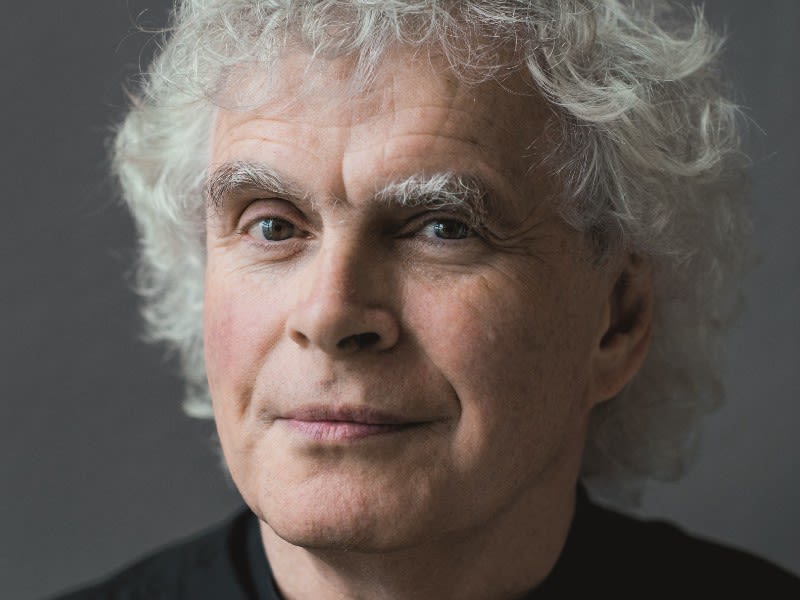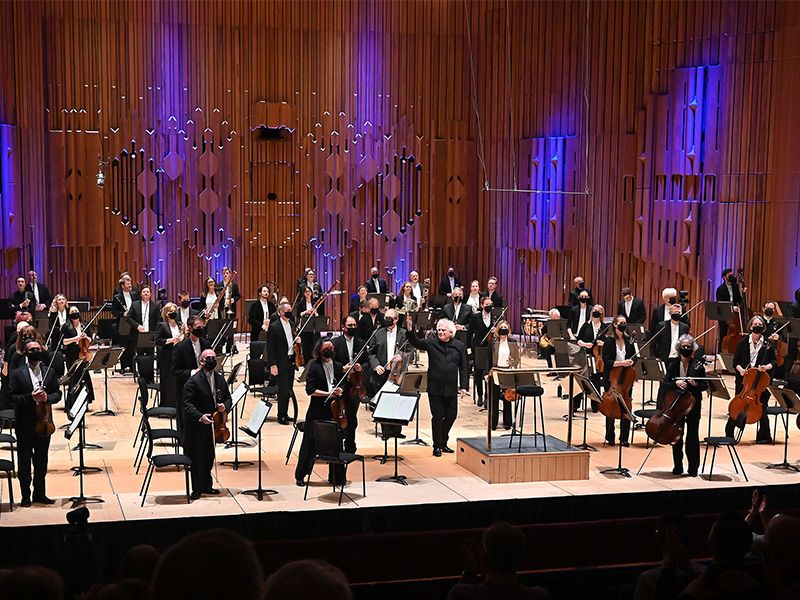LSO Half Six Fix
Beethoven 6
Wednesday 15 September 2021, 6.30pm
Digital Concert Guide
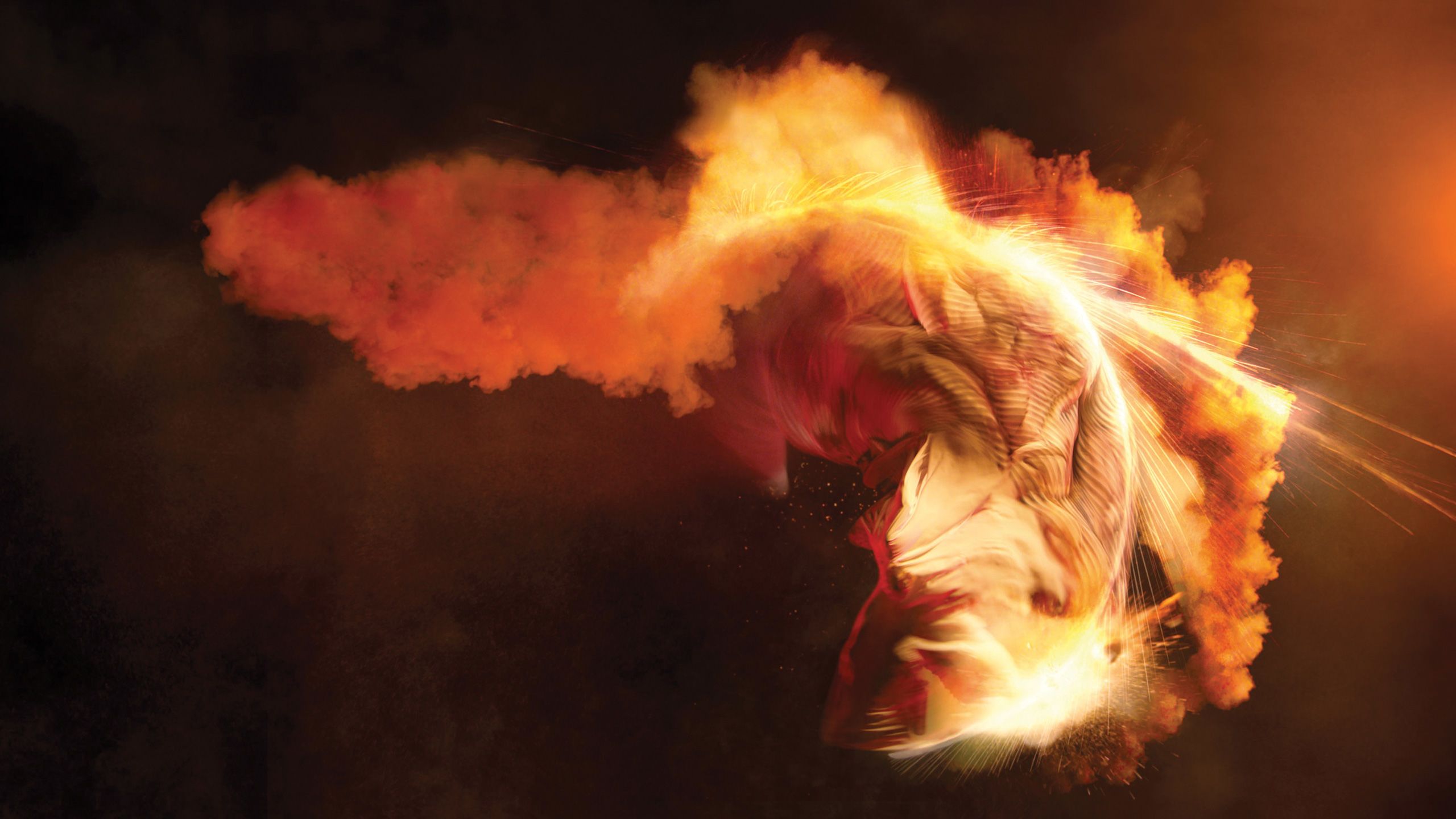
Welcome to tonight's Half Six Fix, a different way to experience the London Symphony Orchestra, with introductions from our Music Director and tonight's conductor Sir Simon Rattle.
YOUR DIGITAL CONCERT GUIDE
You can use your phone to view this digital guide during the concert, and discover more about the music and performers.
Navigate using the menu icon (≡) at the top of the screen.

There is free WiFi in the Concert Hall, available through the Barbican Free WiFi network.
So that everyone can have the best experience, please set your phone to silent and don’t use other apps during the music. Photos can be taken during applause at the end of the concert.
Structure your listening with the Visual Listening Guide
The Guide is designed to act as a map of important sonic landmarks in the Symphony, showing where the main musical themes and moments occur in a visually engaging way, whatever your musical background!
NB The licence to the Visual Listening Guide has now expired, but is available to purchase from the Symphony Graphique website with a 20% discount using the code LSOBEE20 at the checkout.
Opens in a new tab
Tonight's Programme
Ludwig van Beethoven Symphony No 6, 'Pastoral'
Sir Simon Rattle conductor & presenter
Gareth Davies presenter & LSO Principal Flute
London Symphony Orchestra

‘No one can love the country as much as I do. For surely woods, trees and rocks produce the echo that man desires to hear.’

Symphony No 6 in F major Op 68, 'Pastoral'
✒️1808 | ⏰40 minutes
1 Pleasant, cheerful feelings awakened on arrival in the countryside
(Allegro ma non troppo)
2 Scene by the brook (Andante molto moto)
3 Merry gathering of country people (Allegro)
4 Thunder. Storm (Allegro)
5 Shepherds’ song: glad feelings with thanks to the Godhead after the storm
(Allegretto)

Ludwig van Beethoven was passionate about nature and the countryside. He would spend hours walking in the hills and valleys north of Vienna and further afield, often taking with him his musical sketchbooks should inspiration strike.
The Sixth is unique among Beethoven’s nine symphonies – not only because it falls into five movements instead of the standard four, but also since each movement carries a descriptive title suggesting a pastoral scene. It would be possible to imagine these scenes as tracing an overall scenario – arriving in the country (movement 1) and passing a brook (movement 2) before hearing a rowdy villagers’ dance (movement 3); then, after a terrifying storm (movement 4), a concluding song of praise (movement 5).
But Beethoven was clear he was after ‘more an expression of feeling than painting’. He wanted to go beyond straight representation to explore a more personal – even spiritual – connection between nature and the human soul.

From the start, the gently skipping first movement, the ‘arrival in the countryside’, encourages us to slow down and smell the roses. The breezy outdoorsy atmosphere is underlined by a sustained drone in the lower strings suggesting rustic bagpipes, the sound of oboes and bassoons (associated with pastoral music), the suggestion of hunting horns and the unmistakeable chirruping in the flutes.
The Scene by the brook suggests something closer to a blissful reverie. Its serenade-like melody is underpinned by a gently rippling accompaniment. At the end of the movement, the accompaniment drops away and we hear a delicate recital of birds: first the nightingale (flute), then the quail (oboe) and cuckoo (two clarinets), which Beethoven labelled in his manuscript score.
The joyful middle movement, Merry gathering of country people, is a celebration of country life and includes a turn for a village band (led by oboe and bassoon) before moving into a vigorous stomping dance.
Without a break, rumbling cellos and double basses hint at what’s to follow in the Storm movement. Here Beethoven unleashes a tempest of violent, elemental power, complete with thunderclaps in the timpani.
The storm passes almost as suddenly as it arrived and then some gentle yodelling (first on clarinet and then horn), ushers in the final movement, a lilting shepherds’ song of thanksgiving.

Ludwig van Beethoven
1770 (Germany) to 1827 (Austria)
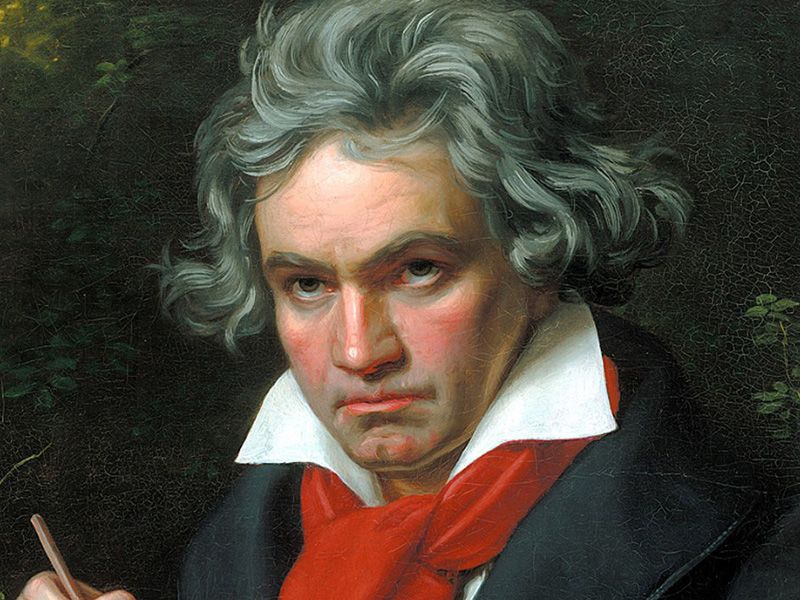
In his early twenties Ludwig van Beethoven left his native Bonn for Vienna, where he became established as a composer, piano virtuoso and improviser of great ability. Largely following the Classical models of Haydn and Mozart in his ‘early’ period, he recognised signs of his impending deafness as early as 1796.
In 1802, he set out his suffering and alienation, his thoughts of suicide and his creative resolve in his Heiligenstadt Testament. His ‘middle’ period was characterised by a broadening of form and an extension of harmony to suit his proto-Romantic expression, spawning the Symphonies Nos 2 to 8, notable piano sonatas, several string quartets and his only opera, Fidelio.
He produced less music in his ‘late’ period (from 1813) but his last years saw his mould-breaking ‘Choral’ Symphony (No 9) and an exploration of increasing profundity in the more intimate mediums of the string quartet and piano sonata.

Sir Simon Rattle on the Sixth Symphony
‘It is one of the most profound of the Beethoven symphonies, and although it has this pictorial and story element to it, the idea that the Storm [fourth movement] has anything to do with weather is always something that’s horrified me.
You can see that it is instead a kind of psychological destruction, or it has to do with the terror in the time of the Revolution … or it has to do with Beethoven’s own rage at his physical infirmity and his thanks to God that somehow he was able to get through it.
But there is absolutely no doubt that the whole symphony is saying something very profound about the violence of nature and the healing power of nature.’

Five Fives
Five more symphonies in five movements:
1 Schumann Symphony No 3
2 Hector Berlioz Symphonie fantastique
3 Gustav Mahler Symphony No 2 (also Nos 5 & 7)
4 Vaughan Williams Sinfonia antartica (No 7)
5 Aaron Jay Kernis Symphony No 1, ‘Symphony in Waves’
The 'Pastoral' Premiere
Beethoven’s Sixth Symphony was premiered in Vienna in 1808 in a monster four-hour (not very Half Six Fix) concert that also included the premieres of his Fifth Symphony, Fourth Piano Concerto and ‘Choral’ Fantasy; as well as two movements from his Mass in C major, a concert aria and a piano improvisation.
One composer present reported:
‘There we sat, in the most bitter cold, from 6.30 until 10.30, and confirmed for ourselves the maxim that one may easily have too much of a good thing.’
Image Beethoven monument, Vienna

Verbose Berlioz
Composer Hector Berlioz not only idolised Beethoven but also had a taste for purple prose.
‘Listen to the gusts of wind gorged with rain, the dull growl of the basses, the shrill hissing of piccolos announcing the fearful storm that is about to break out. The hurricane approaches and increases in intensity … In truth the piece induces dizziness, and there are many who on hearing this storm are not sure whether the emotion they experience is one of pleasure or of pain.’

The Lock Shock
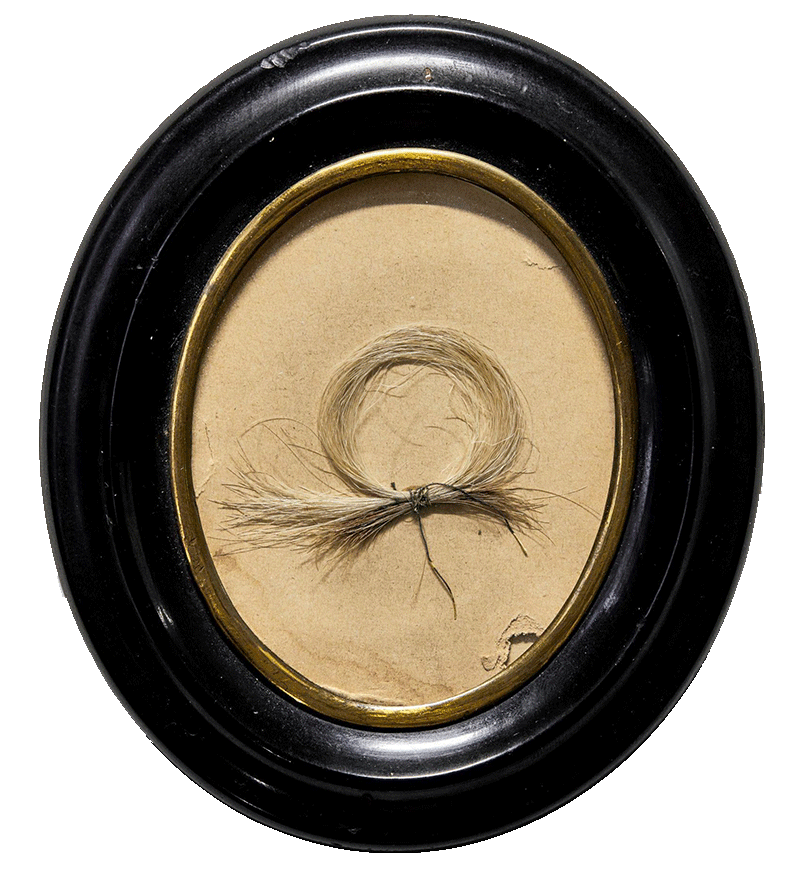
In 2019 ‘a substantial lock’ of Beethoven’s hair went up for sale at Sotheby’s in London. The snipping was apparently made by Beethoven himself and personally given to his friend Anton Halm in 1826. The item fetched £35,000 – double the estimated selling price – and went to an anonymous bidder. By comparison a lock of Admiral Lord Nelson’s hair was sold three years earlier for only £13,750 (you could say a snip at half the price).
Image sothebys.com

Tonight's Artists

Sir Simon Rattle
LSO Music Director
Sir Simon Rattle was born in Liverpool and studied at the Royal Academy of Music. From 1980 to 1998, he was Principal Conductor and Artistic Adviser of the City of Birmingham Symphony Orchestra and was appointed Music Director in 1990. In 2002 he took up the position of Artistic Director and Chief Conductor of the Berlin Philharmonic, where he remained until the end of the 2017/18 season.
Sir Simon became Music Director of the London Symphony Orchestra in September 2017, and will become Conductor Emeritus from the 2023/24 season. He will then take up the position of Chief Conductor of the Symphonieorchester des Bayerischen Rundfunks in Munich. He is a Principal Artist of the Orchestra of the Age of Enlightenment and Founding Patron of Birmingham Contemporary Music Group.
Music education is of supreme importance to Sir Simon, and his partnership with the Berlin Philharmonic broke new ground with the education programme Zukunft@Bphil, earning him the Comenius Prize, the Schiller Special Prize from the city of Mannheim, the Golden Camera and the Urania Medal. He and the Berlin Philharmonic were also appointed International UNICEF Ambassadors in 2004 – the first time this honour has been conferred on an artistic ensemble.
Sir Simon Rattle was knighted in 1994. In the New Year’s Honours of 2014 he received the Order of Merit from Her Majesty the Queen. In 2019, he was given Freedom of the City of London.
London Symphony Orchestra
At the London Symphony Orchestra we strive to inspire hearts and minds through world-leading music-making. We were established in 1904, as one of the first orchestras shaped by its musicians.
Through inspiring music, a world-leading learning and community programme and technological innovations, our reach extends far beyond the concert hall.
On Stage
Guest Leader
Natalia Lomeiko
First Violins
Clare Duckworth
Laura Dixon
Ginette Decuyper
Maxine Kwok
William Melvin
Claire Parfitt
Elizabeth Pigram
Laurent Quénelle
Harriet Rayfield
Sylvain Vasseur
Naoko Keatley
Takane Funatsu
Second Violins
Sarah Quinn
Miya Väisänen
David Ballesteros
Matthew Gardner
Iwona Muszynska
Alix Lagasse
Belinda McFarlane
Csilla Pogany
Andrew Pollock
Paul Robson
Violas
Edward Vanderspar
Malcolm Johnston
Anna Bastow
Germán Clavijo
Stephen Doman
Sofia Silva Sousa
Robert Turner
Nancy Johnson
Cellos
Timothy Walden
Jennifer Brown
Noël Bradshaw
Eve-Marie
Caravassilis
Daniel Gardner
Laure Le Dantec
Amanda Truelove
Double Basses
Colin Paris
Matthew Gibson
Thomas Goodman
José Moreira
Jani Pensola
Flutes
Gareth Davies
Patricia Moynihan
Piccolo
Sharon Williams
Oboes
Juliana Koch
Rosie Jenkins
Clarinets
Chris Richards
Chi-Yu Mo
Bassoons
Daniel Jemison
Shelly Organ
Horns
Diego Incertis Sánchez
Angela Barnes
Olivia Gandee
Jonathan Maloney
Trumpets
Niall Keatley
Katie Smith
Trombones
Rebecca Smith
Andrew Cole
Timpani
Nigel Thomas


